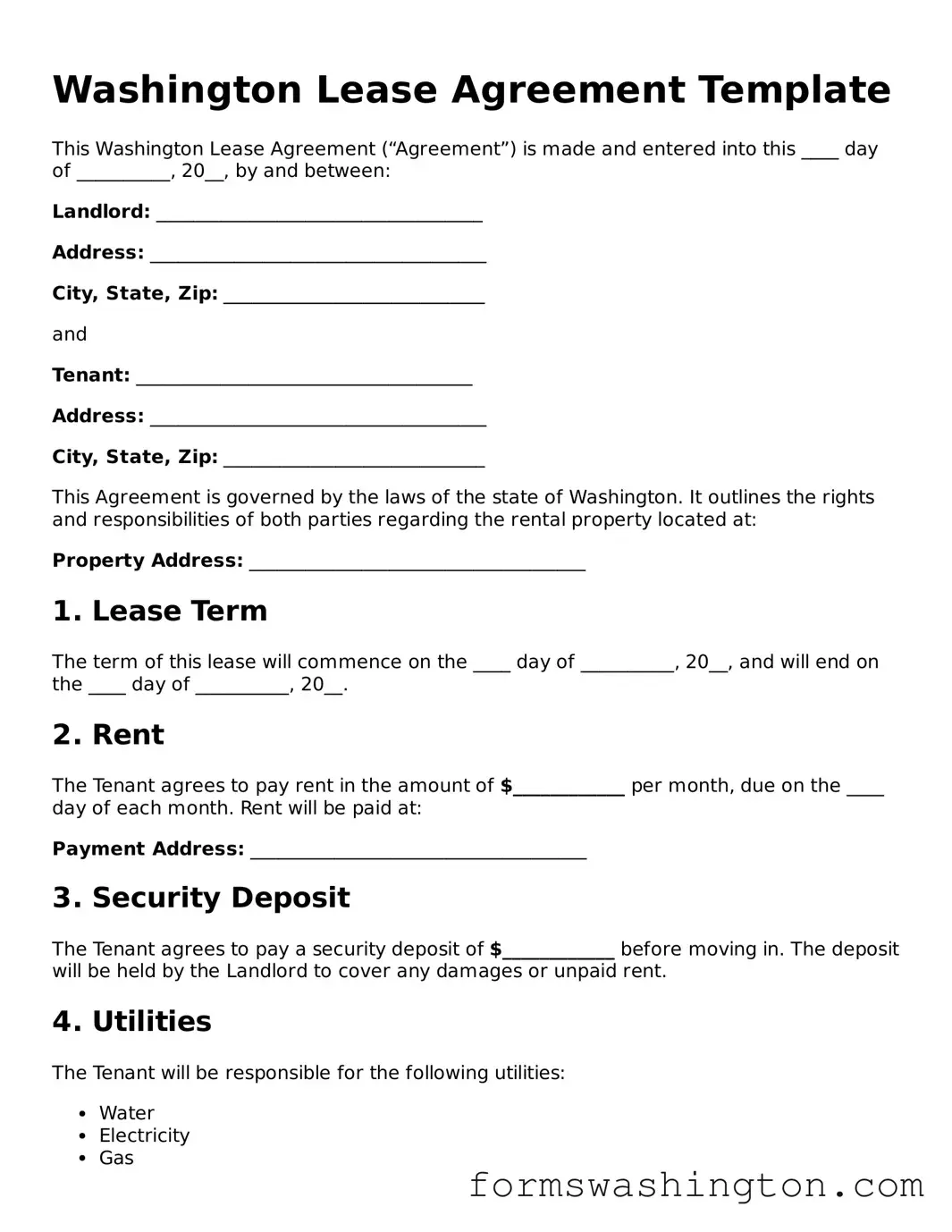Blank Lease Agreement Template for Washington State
A Washington Lease Agreement form is a legal document that outlines the terms and conditions between a landlord and a tenant for renting residential or commercial property in Washington State. This form helps ensure that both parties understand their rights and responsibilities, fostering a clear and respectful rental relationship. By using this agreement, landlords and tenants can avoid misunderstandings and protect their interests throughout the lease period.
Open Editor Here
